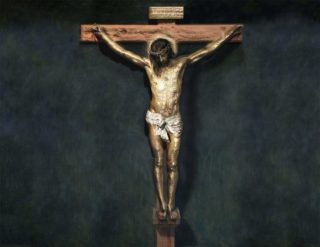 Visual Mark
Visual Mark
Mark is the go-to story of Jesus for visual readers with a short attention span.
That doesn’t mean the Gospel of Mark is for readers who want everything spelled out for them. If we don’t stay alert, we’re going to miss some of the subtleties Mark weaves into the story of Jesus.
For example, Mark will tell the story of Jesus healing blind people. Then he’ll follow that up with stories that show how blind his disciples were—and absolutely unable to understand what Jesus was trying to say.
Mark tells the story of the adult Jesus—the Jesus that Peter knew. Mark apparently got most of his information from Peter, the lead disciple of Jesus.
So Mark reports nothing about the birth and growing up years of Jesus or his family tree.
Instead, Mark starts with the ministry of Jesus and the setup provided by “John the Baptizer.” Mark didn’t call him John the Baptist.
This Gospel is a fast-paced retelling of many miracles and teachings of Jesus. Imagine Mark sitting down with Peter and collecting the stories Peter told about Jesus. Mark likely gathered some stories from the sermons of Peter as well.
That’s what the book reads like—a collection of one story after another, told at random, as opposed to the carefully crafted chronological order we would expect from a historian. Bible experts have been agreed on that since the early AD 100s.
This is an action-lovers book and perhaps the best place to start reading about the life and ministry of Jesus.
If most Bible experts today are right, this is the first story about Jesus that the writers of Matthew and Luke read as well. They seemed to borrow some of Mark’s material for their own books about Jesus.
Writer
Anonymous, but since at least the early AD 100s, the book has been credited to John Mark, a cousin of Barnabas and a ministry associate who traveled with Paul and Peter on mission trips. His mother lived in Jerusalem and hosted a church in her home (Acts 12:12). Early church writers said that Mark’s main source of information was Peter, the leader of Jesus’s disciples. Peter was close enough to Mark that he referred to him as “my son, Mark” (1 Peter 5:13). The earliest record of Mark preserving Peter’s memory of Jesus shows up in a book called Interpretation of the Lord’s Oracles, written between AD 110 and 130. It says that Mark drew from Peter’s information and “wrote down accurately whatever he remembered about what the Lord said and did, though not in chronological order.”
Timeline
Mark covers the ministry, death, and resurrection of Jesus, from roughly AD 30 to 33. Estimates range from the late 20s to the mid-30s. It’s unknown when Mark was written. He started traveling with Paul a couple of decades after Jesus, in the AD 50s. Many Bible experts say Mark was written in the early AD 60s, possibly the first of the four Gospels to put the story of Jesus in writing. Matthew and Luke seem to pull a lot of their material from the information Mark provided. John, however, was his own snowflake—producing a Gospel unlike any of the other three.
 Location
Location
Most of this story about Jesus takes place in Galilee, a territory in what is now northern Israel, between the Mediterranean Sea and a lake called the Sea of Galilee. The climax of the story—the crucifixion and resurrection of Jesus—takes place further south, in Jerusalem.
Intended Readers
There’s no indication that Mark wrote his story of Jesus for anyone in particular, in the way Luke wrote his Gospel for a mystery man named Theophilus. The traditional view is that Mark wrote this letter from Rome, while Paul was awaiting trial in the emperor’s supreme court. This was in the AD 60s, the decade when Emperor Nero started to target Christians for persecution. Mark seemed to direct his story of Jesus to all Christians during these tough times.

 Visual Mark
Visual Mark



